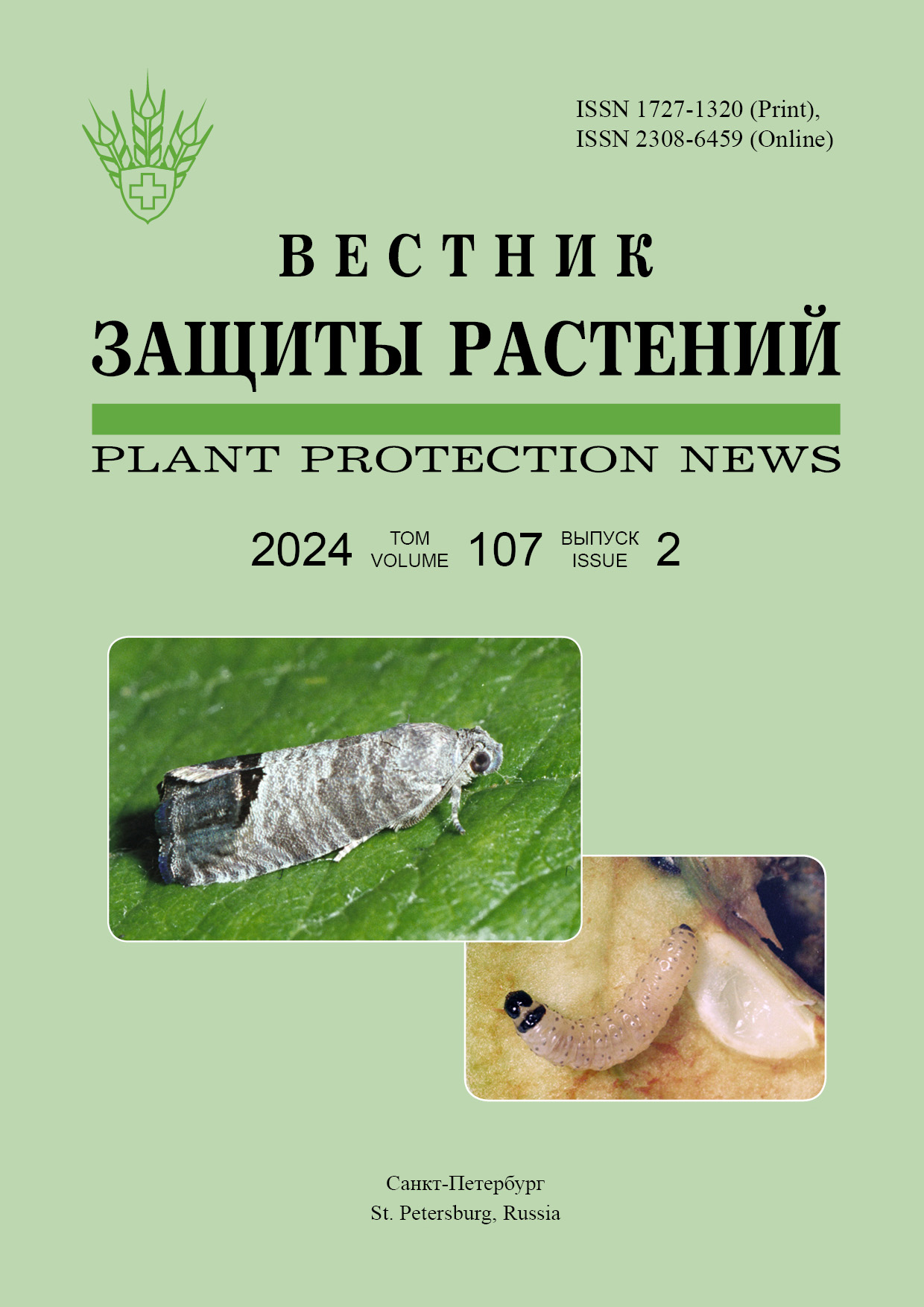Polymorphism in wild South American potato Solanum chacoense for resistance to Colorado potato beetle Leptinotarsa decemlineata
Keywords:
biodiversity, wild relatives, heterogeneous population, breeding, source material, phytophagous pestAbstract
The Colorado potato beetle (CPB) – Leptonotarsa decemlineata is a dangerous potato pest in Russia. The creation of resistant varieties represents the most reliable method for protecting potatoes from this phytophage. A reliable phenotypic assessment of accessions stored in gene banks as seed collections is necessary before using wild potatoes as sources of resistance traits. Plants of nine accessions of S. chacoense (55 genotypes) from collection of the N.I. Vavilov All-Russian Institute of Plant Genetic Resources (VIR) were grown for three years on the experimental plot of VIR branch (Tambov region), where the environment is favorable for CPB. Annually seven parameters were recorded: the number of overwintered beetles per plant, the population of egg per plant, the number of older larvae per plant, the proportion of plants with more than 20 older larvae, the score of haulm damage, the proportion of plants with a high damage score and the number of second generation beetles. The origin of S. chacoense plants belonging to different accessions (“families”) in the VIR collection reliably affects their infestation and damaging by CPB. The influence of the “family” factor is 12–46 % depending on the assessed parameter. Solanum chacoense plants k-21854 are highly resistant and those of k-7394 are vulnerable to CPB. Plants in accessions k-2732, 2861, 3060, 19769, and 21848 were infested by the pest at different levels and varied in their individual damage parameters. Solanum chacoense genotypes k-19769 (542-3) and k-21854 (546-3) showed a high resistance to CPB during all three years of study.



